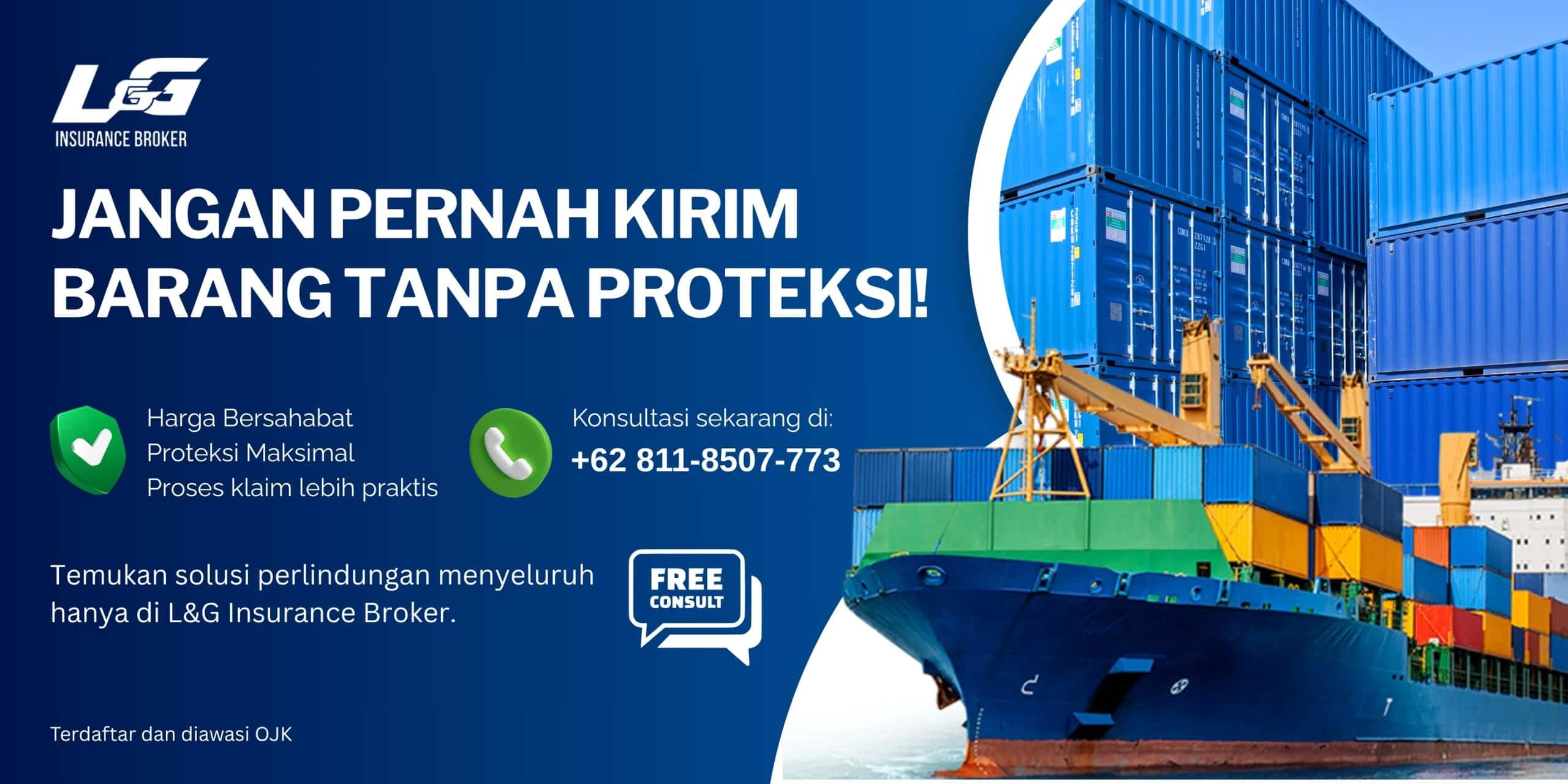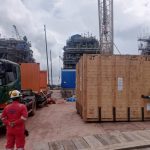Liga Asuransi – Dear risk managers, risk takers, and business owners,
Greetings! I trust this message finds you well and thriving in your ventures. In our ongoing exploration of risk management and insurance, we delve into a crucial facet of global commerce: the transportation of apparel and textiles. These industries, pivotal to economies worldwide, face unique challenges during transit, from theft and damage to logistical delays and regulatory complexities.
Throughout this article, we aim to illuminate the inherent risks associated with transporting apparel and textiles, offering insights into how these challenges can impact supply chains and business continuity. By understanding these risks comprehensively, we empower you to implement robust risk management strategies and secure appropriate insurance coverage.
I invite you to delve into the complexities of safeguarding apparel and textiles during their journey across borders and continents. Your engagement and sharing of this knowledge will not only fortify your understanding but also benefit colleagues and peers in navigating these intricate landscapes.
Thank you for joining us on this exploration. Let’s embark together on a journey to enhance our understanding of risk management in apparel and textile transportation.
Overview of the apparel and textile industry worldwide and Indonesia
The apparel and textile industry is a cornerstone of global trade, valued at over $1.5 trillion. This sector encompasses the production of raw materials (such as cotton and synthetic fibers), the manufacturing of clothing and textiles, and the distribution of finished products. Key players include China, India, Bangladesh, and Vietnam, which dominate production due to their cost-effective labor forces and established manufacturing infrastructures.
In Indonesia, the apparel and textile industry is one of the country’s largest manufacturing sectors, contributing significantly to the economy and employment. With a rich history in textile production, Indonesia leverages its abundant natural resources and skilled labor to produce a diverse range of products, from traditional batik to modern garments. The industry accounts for approximately 10% of the nation’s total exports, generating around $13 billion annually.
Indonesia’s strategic location and competitive manufacturing costs make it a vital player in the global textile supply chain. However, the industry faces challenges such as fluctuating raw material prices, environmental concerns, and the need for technological advancements. Despite these hurdles, Indonesia’s apparel and textile sector remains resilient and poised for growth, driven by both domestic demand and international markets.
The Importance of efficient and secure transportation
Efficient and secure transportation is vital in the supply chain, ensuring timely delivery, cost-effectiveness, and the preservation of product integrity. It minimizes delays, reduces costs, and enhances customer satisfaction by meeting delivery commitments. Secure transportation safeguards goods from theft, damage, and loss, protecting the value of shipments.
In the apparel and textile industry, timely and intact deliveries are crucial to meet fashion cycles and retail demands. Effective logistics also support inventory management, optimize storage, and enhance overall operational efficiency, making transportation a critical component of a successful supply chain.
The Risks of Apparel and Textiles Transportation
Transporting apparel and textiles presents a variety of risks that can impact the supply chain and business operations. One significant risk is theft and pilferage, especially during transit or while goods are in storage awaiting shipment. These items are often valuable and susceptible to theft, whether from unsecured warehouses or during transportation.
Damage during handling and transportation is another critical risk. Apparel and textiles can be delicate and prone to damage from rough handling, improper stacking, or exposure to adverse weather conditions like humidity, rain, or extreme temperatures. Mishandling during loading and unloading processes at ports or warehouses can also result in tears, stains, or other forms of physical damage.
Furthermore, the risk of delays in transit is a concern. Delays can occur due to logistical issues, customs clearance delays, or transportation accidents. These delays can disrupt supply chains, impact production schedules, and lead to financial losses.
Natural disasters such as earthquakes, floods, hurricanes, or tsunamis pose significant risks as well, particularly in regions prone to such events. These disasters can cause complete loss of cargo or severe damage, resulting in financial repercussions for both exporters and importers.
Lastly, regulatory compliance and documentation errors can lead to fines, penalties, or shipment rejections, affecting the smooth flow of goods and causing additional costs and delays.
Effective risk management strategies and comprehensive insurance coverage are essential to mitigate these risks and ensure the safe and timely transportation of apparel and textiles across global supply chains.
Risk Management Strategies for Transporting Apparel and Textiles
Robust Packaging and Handling:
Use high-quality, weather-resistant packaging to protect goods from environmental damage. Ensure proper handling procedures are in place to minimize physical damage during loading and unloading.
Enhanced Security Measures:
Implement strict security protocols, including surveillance, secure locks, and tamper-evident seals. Use GPS tracking systems to monitor shipments in real time and ensure constant visibility.
Efficient Route Planning:
Plan routes to avoid high-risk areas known for theft or political instability. Optimize routes to reduce transit time and exposure to potential delays.
Compliance with Regulations:
Stay updated with international trade regulations and ensure all necessary documentation is accurate and complete. Engage with customs brokers to facilitate smooth customs clearance.
Reliable Logistics Partners:
Partner with reputable logistics providers who have a proven track record in handling apparel and textiles. Conduct regular audits to ensure they meet your standards for safety and reliability.
Insurance Coverage:
Secure comprehensive insurance coverage tailored to the specific risks associated with apparel and textile transportation. This should include coverage for theft, damage, delays, and other potential disruptions.
Inventory Management:
Implement advanced inventory management systems to track goods throughout the supply chain. Use RFID tags and barcodes to minimize the risk of loss and misplacement.
Training and Education:
Train staff on best practices for packaging, handling, and security. Conduct regular risk assessments and update protocols as needed to address emerging threats.
By adopting these strategies, businesses can significantly reduce the risks associated with transporting apparel and textiles, ensuring a secure and efficient supply chain.
Importance of Quality Insurance Coverage for Apparel and Textile Transportation
Quality insurance coverage is crucial for the transportation of apparel and textiles due to the high value and vulnerability of these goods. Apparel and textiles are prone to various risks during transit, including theft, damage, loss, and delays. Comprehensive insurance ensures financial protection against these unforeseen events, safeguarding businesses from significant financial losses.
Moreover, quality insurance coverage provides peace of mind, allowing companies to focus on their core operations without worrying about potential disruptions in the supply chain. It also enhances customer confidence, as clients are assured of compensation in case of any mishaps. Additionally, having robust insurance can expedite the resolution of claims, minimizing downtime and ensuring quicker recovery.
Marine Cargo Insurance Coverage for Apparel and Textiles: ICC A, ICC B, and ICC C
Marine Cargo
Insurance policies offer varying degrees of coverage for the transportation of apparel and textiles. The three primary types are ICC (Institute Cargo Clauses) A, B, and C, each providing different levels of protection.
ICC A
This is the most comprehensive coverage, often referred to as “All Risks” coverage. It insures against all risks of loss or damage to the insured cargo, except those explicitly excluded in the policy. This includes risks like theft, damage from rough handling, accidents, and natural disasters. For high-value apparel and textiles, ICC A provides the most extensive protection, ensuring maximum financial security.
ICC B
This coverage is more restrictive compared to ICC A. It covers named perils, such as fire, explosion, vessel or craft being stranded, grounded, sunk or capsized, overturning or derailment of land conveyance, collision or contact of vessel with any external object, discharge of cargo at a port of distress, and general average sacrifice. While it provides substantial protection, some risks, especially those not specifically listed, might not be covered.
ICC C
This is the most limited form of coverage, offering protection against a smaller range of specified perils. It includes basic risks like fire, explosion, vessel or craft being stranded, grounded, sunk, or capsized, and overturning or derailment of land conveyance. ICC C does not cover theft, pilferage, or water damage, making it less suitable for high-value shipments unless cost constraints are significant.
Choosing the right level of Marine Cargo Insurance—ICC A, B, or C—depends on the value of the apparel and textiles, the specific risks associated with their transport, and the degree of financial protection desired.
Real Accident Examples in Apparel and Textile Transportation
Container Ship Fire:
In 2018, the Maersk Honam, a container ship carrying various goods including textiles, suffered a catastrophic fire in the Arabian Sea. The fire destroyed many containers, causing significant loss of apparel and textile goods, illustrating the risk of fire during maritime transport.
Collision Incident:
In 2019, two container ships, the Seatrout and Huayang Endeavour, collided in the North Sea. Several containers, including those carrying apparel, were damaged or lost overboard. This incident highlights the risk of collisions and the resulting loss of cargo.
Port Explosion:
The Beirut port explosion in 2020 caused massive destruction to nearby warehouses, including those storing textiles. The blast damaged goods and disrupted supply chains, showing how unforeseen events can impact the transportation of apparel and textiles.
Piracy Attack:
In 2017, a cargo ship transporting apparel was hijacked by pirates off the coast of Somalia. The crew was held hostage, and the cargo was looted, demonstrating the threat of piracy in certain maritime regions.
Truck Accident:
In 2021, a truck carrying textiles overturned on a highway in Bangladesh due to driver fatigue and poor road conditions. The accident resulted in significant damage to the goods, emphasizing the risks associated with the road transport of apparel and textiles.
These examples underscore the importance of comprehensive risk management and insurance coverage in mitigating potential losses during apparel and textile transportation.
The Importance of an Insurance Broker
Every marine cargo shipment benefits immensely from the service of an insurance broker due to several critical factors. Firstly, the complexity of marine insurance policies can be overwhelming. Insurance brokers are experts in navigating these complexities, ensuring that clients receive comprehensive coverage tailored to their specific needs. They understand the intricacies of various policies and can recommend the best options, whether it’s for high-value textiles or bulk commodities.
Secondly, insurance brokers play a pivotal role in risk assessment. They analyze the potential risks associated with each shipment, such as route hazards, seasonal weather patterns, and geopolitical issues. This analysis allows them to advise on appropriate coverage levels, helping clients avoid underinsurance, which could result in significant financial loss.
Moreover, brokers have access to a wide network of insurers, providing clients with competitive premium rates and broader coverage options. Their established relationships with insurance companies also facilitate smoother claims processing. In the event of a loss, brokers act as advocates for their clients, ensuring claims are settled promptly and fairly.
Lastly, using an insurance broker saves time and resources for businesses. Instead of dealing with multiple insurers and policy details, businesses can rely on brokers to handle all insurance-related matters efficiently, allowing them to focus on core operations. In essence, insurance brokers provide invaluable expertise, risk management, and convenience, making them essential for every marine cargo shipment.
Why use L&G Insurance Broker?
In Indonesia, navigating the complexities of marine cargo insurance for apparel and textiles requires the expertise of a trusted insurance broker like L&G Insurance Broker. With a deep understanding of the local market nuances and global industry standards, L&G Insurance Broker stands out as a reliable partner for businesses involved in apparel and textile transportation.
L&G Insurance Broker excels in providing tailored insurance solutions that meet the specific needs of apparel and textile exporters and importers. They offer access to comprehensive marine cargo insurance policies, including ICC A, ICC B, and ICC C, ensuring that every shipment is adequately protected against a wide range of risks such as theft, damage, and natural disasters.
What sets L&G Insurance Broker apart is their commitment to personalized service and customer satisfaction. They leverage their extensive network and strong relationships with reputable insurers to negotiate competitive premiums and favorable terms for their clients. This ensures that businesses can focus on their operations with the confidence that their cargo is secure, and their insurance needs are expertly managed.
Moreover, L&G Insurance Broker’s proactive approach to risk management and claims assistance further enhances their value proposition. They provide proactive advice on risk mitigation strategies and act as dedicated advocates during the claims process, ensuring quick and fair settlements in the event of a loss.
For apparel and textile businesses in Indonesia looking to safeguard their marine cargo shipments with reliable insurance coverage and expert guidance, L&G Insurance Broker remains the preferred choice, delivering peace of mind and operational efficiency.
For all your insurance needs, Call L&G Insurance Broker now!
—
MARINE CARGO INSURANCE FOR TEXTILE SHIPMENT WILL BE SAFER WITH US – DON’T WASTE YOUR TIME AND CALL US NOW
24 JAM L&G HOTLINE: 0811-8507-773 (CALL – WHATSAPP – SMS)
website: lngrisk.co.id
Email: customer.support@lngrisk.co.id
—






















